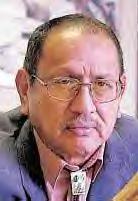|
|
Canku Ota |
|
|
(Many Paths) |
||
|
An Online Newsletter Celebrating Native America |
||
|
September 8, 2001 - Issue 44 |
||
|
|
||
|
Lummi School Sees Big Changes |
||
|
by Kari Thorene Shaw, The Bellingham Herald-September 1, 2001 |
 Despite
losing most of its teaching staff last June, Lummi Tribal School opened
this week with a reconstituted staff and a new curriculum. Despite
losing most of its teaching staff last June, Lummi Tribal School opened
this week with a reconstituted staff and a new curriculum. This is a transitional year for the 200-student school, where teachers for the first time will use a new curriculum built around Lummi culture. Superintendent Luke Enemy Hunter spent the past year developing the curriculum in anticipation of a new $24 million tribal school facility, expected to open in fall 2003. Right now enrollment is down from last year's 270 to about 200. Tribal officials anticipate 750 students when the new building opens. "It's pretty exciting," said Enemy Hunter of the new teachers and programs. "We have a really wonderful group." New teachers Save three teachers who renewed their contracts last year, the staff at Lummi tribal's kindergarten through eighth grade school is new. At least half of the kindergarten through eighth grade teaching staff resigned at the end of last school year, accusing Enemy Hunter of bullying them into leaving. However, every high school instructor, minus the principal, remained. The summer's complaints seem to be water under the bridge for Enemy Hunter, who said the new teachers are just what he was looking for. "We are building a team from kindergarten through 12 grade," he said. "Last year, it was kind of fragmented." Enemy Hunter reported two new kindergarten teachers and new teachers in the first, fourth and sixth grades. And on Thursday night, the Ferndale School Board passed its 2001-2002 budget with $650,000 allocated for teacher salaries at Lummi, said Ferndale Assistant Superintendent Ron Cowan. The money supplements Lummi tribal's wages, which are traditionally lower than the state's average for teachers. Tribal school teachers are launching a new kindergarten through 12th-grade curriculum modeled around the state's basic learning requirements. Enemy Hunter said it integrates state standards for basic learning with Indian stories and themes. Like other Washington students, Lummi tribal students increasingly will be measured against the state's tough new academic standards. This year's sixth-graders will be the first class that will have to pass all four portions of the state's 10th-grade test in order to graduate. The emphasis on tests has worried American Indian educators across the state and at Lummi. Although there have been improvement in recent years, the scores of Indian students on standardized tests typically fall far short of those of white students, as do those of black and Hispanic youngsters. American Indian fourth-graders, for example, met the state's math standard on the Washington Assessment of Student Learning at half the rate of white students last year. Lummi officials have pointed to the school's shabby facility -- a cluster of droopy portables -- as one impediment to student learning. But with a new building on the way, all eyes are focused on the curriculum. Enemy Hunter said the new curriculum is a direct result of a statewide focus on literacy, though it is a work in progress. "It's not all cut-and-dry -- we are going to use some things and do some things and then change," Enemy Hunter said. "We will take some things out that didn't work so well." Though still in its old buildings on Kwina Road, the tribal school is boasting a couple of new programs for the school year. For the first time, the school will have a music teacher. The instruction will be much like public school music classes, but with occasional Indian singers and drummers in class, Enemy Hunter said. A street law program for the seventh and eighth grades, where students learn about tribal laws regarding things like alcohol and drug use, should begin in the next few weeks, he said. "It's kind of a deterrent, but not only a deterrent," he said. "The kids get a sense of what the laws are and what happens. It's our way to deal with some of the things that happen with kids in terms of drugs." |
|
|
|
Lummi Tribe |
|
|
||
|
|
||
| Canku Ota is a free Newsletter celebrating Native America, its traditions and accomplishments . We do not provide subscriber or visitor names to anyone. Some articles presented in Canku Ota may contain copyright material. We have received appropriate permissions for republishing any articles. Material appearing here is distributed without profit or monetary gain to those who have expressed an interest. This is in accordance with Title 17 U.S.C. section 107. | ||
|
Canku Ota is a copyright © 2000, 2001 of Vicki Lockard and Paul Barry. |
||
|
|
|
|
|
The "Canku Ota - A Newsletter Celebrating Native America" web site and its design is the |
||
|
Copyright © 1999, 2000, 2001 of Paul C. Barry. |
||
|
All Rights Reserved. |
||

